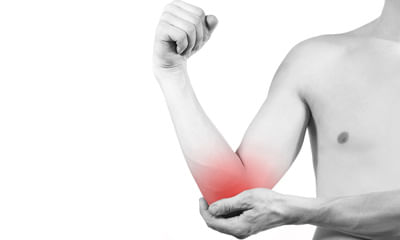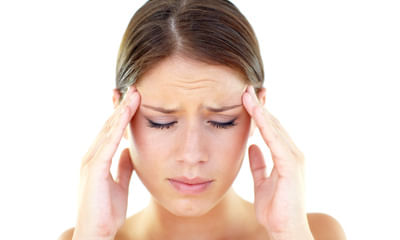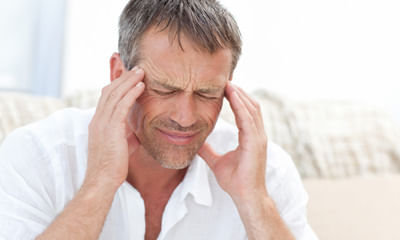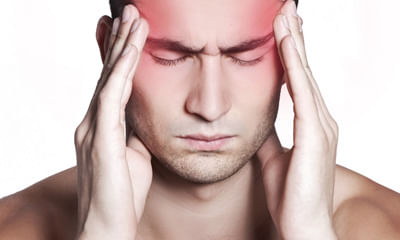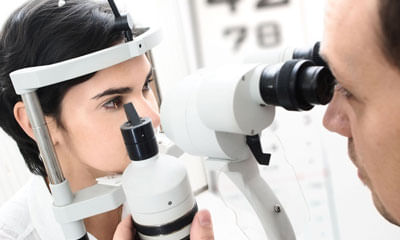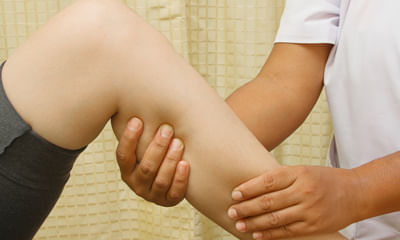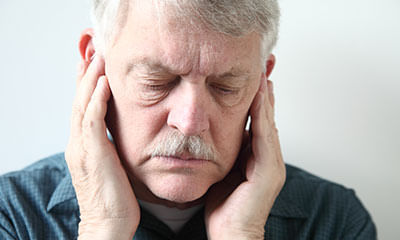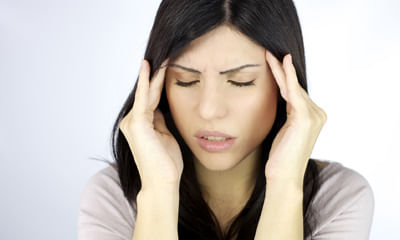Left Side Headache Pain
Female age: 18 height: 5’7 weight: 65-67 kg on 26 june 2022 I threw up blood for the first time (fresh blood and just co ...
Ask Free Question
Homeopathy has very effective and reliable treatment for your problem. No side effects. Please take homeopathic medicine, preliminary dose, ipecac 30-once daily in the evening for 3 days. Book online appointment/consultation with me -(commencing from text consult rs 149, audio/ phone-rs 300) for further more comprehensive prescription and treatment.
Long term shoulder/ shoulder blade pain, shoulder moved forward winter it gets worstlong term facial paining term pain i ...
Ask Free Question
The symptoms you've listed can be complex and may indicate various underlying health conditions. Given the wide range of symptoms affecting different parts of your body, it would be best to consult with a primary care physician initially. They can conduct a thorough assessment, review your medical history, and perform any necessary physical examinations. Based on your symptoms, the primary care physician may refer you to one or more specialists, depending on their assessment. Here are some specialists who may be involved in your care: neurologist: given your long-term headache, memory issues, and double vision, a neurologist specializes in evaluating and treating conditions affecting the nervous system, including the brain and nerves. Rheumatologist: if you're experiencing long-term body pain, weakness, and difficulty sleeping, a rheumatologist specializes in diagnosing and treating conditions affecting the joints, muscles, and bones, such as fibromyalgia or autoimmune disorders. Ophthalmologist: since you're experiencing long-term effects on your eyes, including double vision and changes in prescription, an ophthalmologist specializes in diagnosing and treating eye conditions and may perform a comprehensive eye examination. Orthopedic surgeon: if your shoulder and shoulder blade pain is persistent and affecting your mobility, an orthopedic surgeon specializes in diagnosing and treating musculoskeletal conditions, including injuries and disorders of the shoulder. Ent specialist (otolaryngologist): if you're experiencing long-term facial pain, pain around the ear, and difficulty sleeping due to these symptoms, an ent specialist can evaluate conditions affecting the ear, nose, and throat, such as temporomandibular joint (tmj) disorder or sinusitis. In terms of blood tests, your healthcare provider may recommend various tests based on your symptoms and suspected underlying conditions. These may include: complete blood count (cbc) comprehensive metabolic panel (cmp) thyroid function tests inflammatory markers (e.g. Erythrocyte sedimentation rate, c-reactive protein) vitamin d levels autoimmune markers (e.g. Antinuclear antibodies) lyme disease testing (if relevant based on your history and symptoms)
I'm a 32 year female, i'm having pain in my left side body from head to toe, in hand i'm having pain in my little finger ...
Ask Free Question
Hello, your hb levels are very low. Please consult a physician immediately and get it rectified first with thorough physical examination. The other things will be eventually taken care.
My left head feels very heavy and tight from front to back from 27 days I am taking pregabalin 75 mg but no relief till ...
Ask Free Question
I can offer some general information that might be helpful. It's essential to consult with a healthcare professional, preferably a neurologist, about your persistent symptoms. The heaviness and tightness you're experiencing in your left head for an extended period could have various causes, and it's important to have a thorough evaluation to determine the underlying issue. Here are some possibilities to consider: tension headaches: tension headaches can cause a sensation of tightness or pressure in the head. If you've been under stress or have a history of anxiety or depression, tension headaches may be more likely. Migraines: migraines can also cause head discomfort and can vary in their symptoms. They often involve throbbing pain on one side of the head and may be accompanied by other symptoms like nausea, light sensitivity, or sound sensitivity. Medication side effects: pregabalin, like any medication, can have side effects. It's possible that your symptoms are related to the medication. It's important to discuss this with your healthcare provider, and they may need to adjust your medication or consider alternative treatments. Other neurological conditions: there are various neurological conditions that can cause head discomfort and require further evaluation by a neurologist. These could include issues with blood vessels, nerves, or other structures in the head. Given that you've been experiencing these symptoms for an extended period and are already on medication for depression, it's crucial to consult with a healthcare professional who can conduct a comprehensive evaluation and determine the exact cause of your symptoms. They may recommend additional tests, such as imaging studies or blood tests, to rule out any underlying medical conditions. It's essential to be open and honest with your healthcare provider about your symptoms, their duration, and any potential side effects of your current medications. They can provide the most appropriate guidance and treatment options based on a thorough assessment of your condition.
Doc mujhe march 2023 me ek bar nose bleed hua tha uske bad se bht headache rehta tha par ab headache thoda control hai p ...
Ask Free Question
Please measure your blood pressure moreover you are taking thyroid medication -- please continue them as the symptoms are related to the hypothyroidism itself.
My age is 22, when I checked my iop 1 month ago it is 26 and cd ratio is 0.73 right eye and 0.74 in left eye, then docto ...
Ask Free Question
Normal intraocular pressure is = 12-21 mm of hg. Any thing exceeds 21 is considered increased pressure. In your case pressure is 26. Normal cup/disc ratio may vary from 0.1-0.9. If cup to disc ratio size is more than > 0.5 ,then it is called case of glaucoma. In your case right eye ratio is 0.73 and left eye ratio is 0.74 in open angle glaucoma cd ratio > 0.6 in closed angle glaucoma the iop exceeds 40 mm of hg.
I am 18 years old female of 42 kgs. There is a severe pain in the diaphragm part of my body left side. It doesn't stop a ...
Ask Free Question
Hi, as per your symptoms it looks like you might be having lung, cardiac or gastritis issues which needs to be confirmed with tests. Can take analgesics & antacids for pain relief. please consult with me through private section for detailed discussion & prescription for you.
Sometime I have leg pain sometimes headache sometimes back pain and sleep problem also. Sexual problem is also there. I ...
Ask Free Question
Back pain back pain exercises; kindly do these exercises. Back pain is described as acute or chronic based on how long you’ve had it. Acute pain lasts days to weeks, subacute pain lasts six weeks to three months, and chronic pain lasts longer than three months. Things that make it better or worse back pain may get worse with movement or if you sit or stand for a long time. It may get better if you switch positions or walk around. Other symptoms you may experience with back pain include: •the painful spot looking swollen and feeling tender to the touch •a muscle spasm in the painful area •numbness or weakness in one or both of your legs (if the pain is due to a nerve issue) if you find you have back pain and can’t hold your urine or bowel movements, something is pressing on your spinal nerves, and you should be evaluated immediately. This condition, called cauda equina syndrome, can cause severe long-term damage to your spinal nerves if not treated right away. 6 imbalances that cause pain—and how to fix them "pain is a medical condition and a medical issue, says brett jones, owner of applied strength in pittsburgh who is certified for the functional movement screen, a system of tests and cor rective exercise strategies. "it's a warning sign. The pain is there to tell you something's wrong. And that warning sign could be more serious than "you're going too hard. Jones and the other coaches consulted for this piece all had a horror story to tell-when pain in a client meant a more serious condition such as a nerve issue, thyroid issue, or even cancer. The point: if you experience regular pain while exercising-or when you're not-go to the doctor. If you've been cleared by a doc and you're still feeling discomfort, try these simple tests to see what's truly causing the pain-it could be related to an imbalance in a completely different part of your body. The good news: with these drills, stretches, and corrective exercises, you may be able to fix them-no doctors necessary. 1. Standing extension how it helps – this standing extension helps reverse what you do on a daily basis (hunching)… since most bulging discs and herniated discs are caused by poor posture and repeated flexion of the spine (esp bending fwd in bad posture), this stretch helps push the disc back to neutral position. How to do it – begin this exercise by standing up with good posture. Now take both hands and place them on both sides of your lower back. Now with the help of your hands push your pelvis forward and extend your spine back. Follow the extension with your neck so that you end up facing the ceiling. – start with 10 repetitions and do 2-3 sets. – this one is particularly great to do when you need a break from sitting at your desk. ** this should not cause any pain. If you feel pain during it is not a good one for you. In that case, stop and try some of the other exercises below instead. 2. Half cobra pose (prone lumbar extension) how it helps – the half cobra stretch helps to push the disc material back towards the center of the inter-vertebral disc to allow for improved healing. The goal of repeated lower back extension is the “centralization of symptoms”, which basically means pain that travels down the affected leg to the foot should come back up closer to the low back – which will in turn alleviate the pain. How to do it – begin this exercise by lying on your stomach (prone position) and slowly prop yourself up on your elbows while keeping your hips in contact with the floor. – hold the prop-up position for 10-15 seconds before returning to the prone position (lying face down). – gradually increase to holding the end position for 30 seconds. Aim for 10 repetitions of this stretch. ** initially, you may not be able to tolerate this position very well, so make sure you start slowly and carefully. If there’s any pain, try a different exercise instead. 3. Full cobra pose (advanced extension) how it helps – this stretch is based on the same principle as the half cobra pose above. This advanced extension helps to push disc material back towards the center of the intervertebral disc, with the goal of alleviating pain symptoms. How to do it – once you’ve mastered the half cobra pose, you can increase the difficulty by moving to the advanced version of this stretch. Begin this exercise by lying on your stomach in the prone position (lying facing down) and slowly press up on your hands while keeping your pelvis in contact with the floor and lower back relaxed. – hold the prop-up position for 10 seconds. Aim for 10 repetitions of this stretch. – eventually try to hold this pose for longer if it feels good (20-30 seconds). ** if you feel pain during this exercise, it is not a good one for you. In that case, stop and try some of the other exercises instead. 4. Cat-cow how it helps – this is one of the most popular herniated disc exercises. By combining two yoga poses, the cat-cow stretch can help to relieve pressure on the herniated disc by opening the intervertebral disc space. It also improves mobility of the spine, which may help to relieve disc herniation pain and speed recovery. How to do it – begin this stretch on your hands and knees. Inhale and let your stomach “drop” towards the floor as you look up towards the ceiling. – follow this by exhaling and slowly rounding your spine while pressing into the floor with your hands and slightly curving your neck to look at your feet. – aim for 10 repetitions of this stretch and do 2-3 sets. How it helps – this exercise will help strengthen and stabilize your lower back and deep spine muscles. This will help you to maintain a good posture and avoid future episodes of herniated discs. How to do it: – begin on your hands and knees with your hands positioned under your shoulders and knees positioned under your hips. – raise your left arm and reach it forwards until it is aligned with your torso; at the same time, kick your right leg backwards until is it aligned with your torso. – hold this position for 2-3 seconds before slowly returning to the starting position. – repeat with your right arm and left leg. – alternate sides for 10 repetitions and do 2-3 sets. ** ensure that your head, neck, and back maintain a neutral alignment to minimize stress on your neck. 5.plank: how it helps – just like the bird dog, this “core” exercise will help bring your pelvis into right position by strengthening the deep spinal muscles and glutes (butt muscles). How to do it – begin lying on your stomach with your forearms against the mat. – engage your core and lift your body so that you are resting on your forearms and toes. – start with 10 second holds and work up to 30 second holds, do 2-3 sets. ** ensure to keep your back straight throughout the entire exercise – spine in neutral position. Thoracic expansion if you’re using a chair, sit facing forward and allow your upper body to fall over the back of the chair. Extend your arms above your head for a deeper stretch. Hold either position for 10 seconds. 1. Plank the world record for the longest plank is 8 hours. Luckily, you don’t need to hold it that long for the exercise to have an effect! in fact. You can hold it for 10-15 seconds. • the plank is similar to a push-up position, but instead of resting on your hands, you rest on your elbows and bring them directly underneath your chest. • after kneeling, lean forward and place your elbows on the ground directly below your shoulders. • lift your knees off of the floor and push your feet back. Ensure your back is straight and keep your neck aligned with the rest of your spine. • hold the position and tighten your core muscles for the desired time. 2. Side plank just like the original plank, but only balancing on one side. • lie on the floor on your side, facing sideways with your feet together. • lift up your body until you are supporting yourself with your elbow, directly below your shoulder. • raise your hips until your body is in a straight line and tighten your core muscles; your body should create a slant from your shoulders to your feet. • hold this position without dropping your hips. • repeat on the opposite side. 3. Pelvic tilt with exercise ball sit on a ball that allows your legs to be at a 90-degree angle with your feet flat on the floor. • keep your shoulders back and spine straight. • tilt your hips forward and flex your abdominals tight. • tilt your hips backward as you stick your tailbone out. • move back and forth slowly, keeping your shoulders back. • repeat 10 times for 3 sets. 4. Superman lie on your stomach, face down, with your arms out in front of you. • lift arms, legs, and chest off the floor simultaneously while keeping your hips grounded. • hold for a minimum of two seconds. • lower back down slowly. • repeat 10 times for 3 sets. 6. Crunches lie flat on your back, placing your feet flat on the floor with your legs bent. • fold your arms across your chest and lift your torso up until your head, neck, and torso are off the ground. • hold for a moment before lowering back down. • repeat. 6. Quadruped arm opposite leg raises • kneel on the floor, lean forward, and place your hands palm-down on the floor. • make sure your back is straight, your knees are below your hips, and that your palms are directly below your shoulders. • raise one arm as you raise the opposite leg until both are aligned straight out from your body, parallel to your spine. • slowly lower both your arm and leg until you are back in the starting position. • switch arm and leg, and repeat. 7. Dead bug lie flat on the floor on your back. • lift your arms straight up from your body, reaching through the air. • raise one leg until it is at a 90-degree angle from your body. • slowly lower until it is in the starting position. • switch legs and repeat. 8. Hip bridge lie on your back with your knees bent and raised, your feet flat on the floor, and your arms at your sides. • keep your feet hip-distance apart and try to keep your leg in vertical alignment with your knee. • flex your glutes and push through your heels to raise your hips upward. Try to make a diagonal line from your shoulders to your knees. • hold for a short moment before lowering back down. • repeat 10 times for 3 sets.
Jaw blocking only 2 fingers space is left how to get the original size or some exercise to get rid from this. ...
Ask Free Question
I'm sorry to hear that you're experiencing jaw locking. This can be a very painful and frustrating symptom. Unfortunately, I cannot provide medical advice or diagnose your condition. It is important to see a doctor or dentist to get a proper diagnosis and treatment plan. However, I can provide you with some general information about jaw locking, which may be helpful: causes: jaw locking can be caused by a variety of factors, including temporomandibular joint disorder (tmj), arthritis, muscle tension, or trauma. Symptoms: in addition to jaw locking, you may also experience pain, clicking or popping sounds in the jaw, difficulty chewing, and headaches. Treatment: treatment for jaw locking will vary depending on the underlying cause. In some cases, home remedies such as rest, ice, and over-the-counter pain relievers may be helpful. In other cases, more specialized treatment such as physical therapy, medication, or surgery may be necessary. Here are some exercises that may help to improve jaw mobility, but please be sure to consult with a doctor or dentist before trying them: gentle jaw stretches: open your mouth as wide as you comfortably can and hold for a few seconds. Repeat 10 times. Side-to-side jaw movements: move your jaw slowly from side to side, opening and closing your mouth slightly with each movement. Repeat 10 times on each side. Tongue exercises: stick your tongue out as far as you can and hold for a few seconds. Repeat 10 times. It is important to note that these exercises should not be painful. If you experience any pain, stop immediately and consult with a doctor or dentist. I hope this information is helpful. Please let me know if you have any other questions. Image of sidetoside jaw movements exerciseopens in a new window www.jawflex.com sidetoside jaw movements exercise.
Im 8th month pregnancy during 2 days I have severe headache back to front most severity in left side and I inject 3 days ...
Ask Free Question
Hi, I understand your concern. Headaches are quite common in pregnancy. Follow some home remedies before medications please hydrate yourself with water and juices. Use essential oils like eucalyptus oil. Get enough sleep and a good head massage. If it's continuous, take tab. Paracetamol. It's safer than the rest of the painkillers. I would also like to understand if your pain is from the time of your ozofer fcm inj? If yes, then do you have any other symptoms too like palpitations or heaviness in the chest? Please consider taking consultation if there are any continuous symptoms following injection. Hope this helps. Take care.

